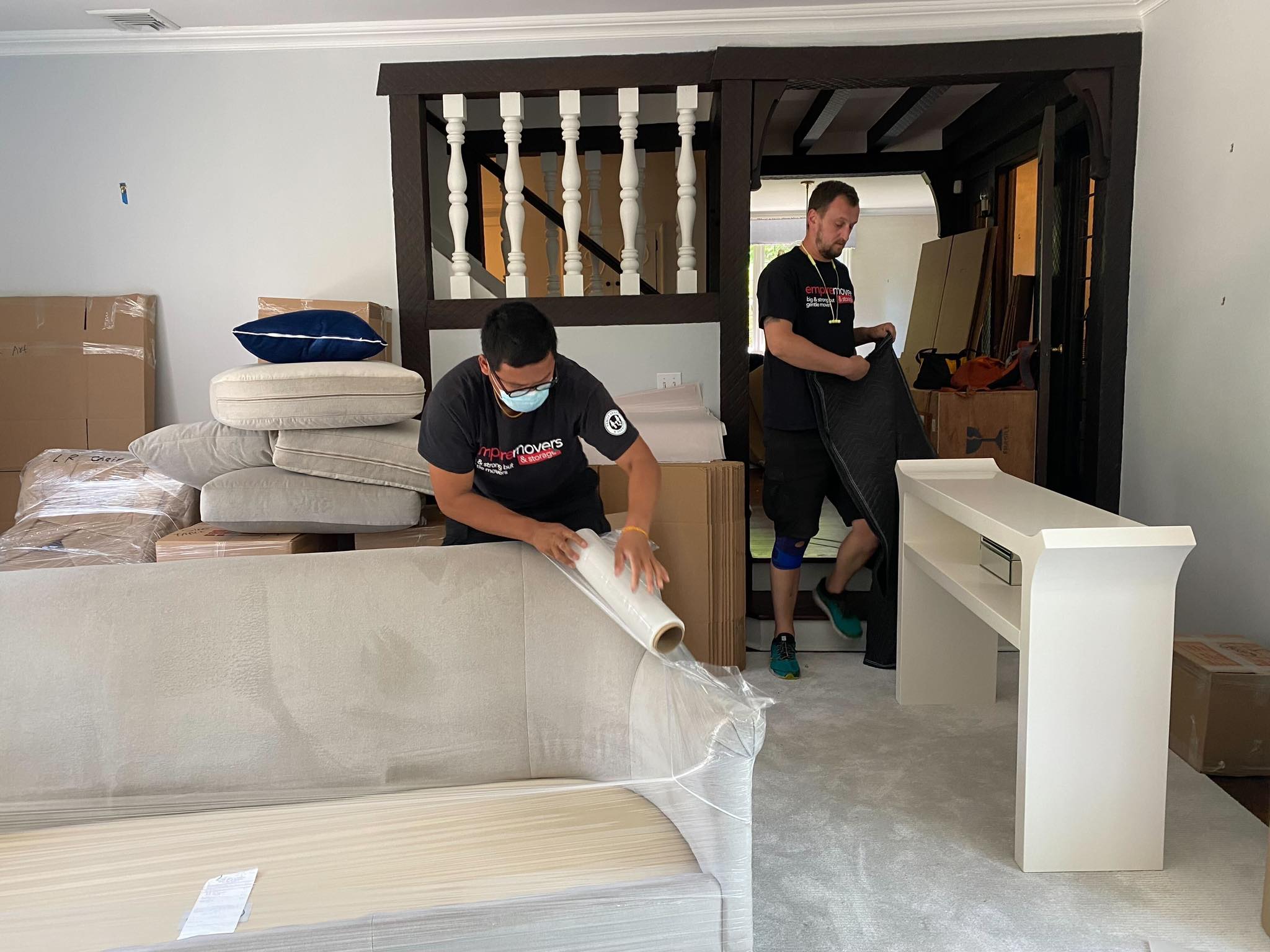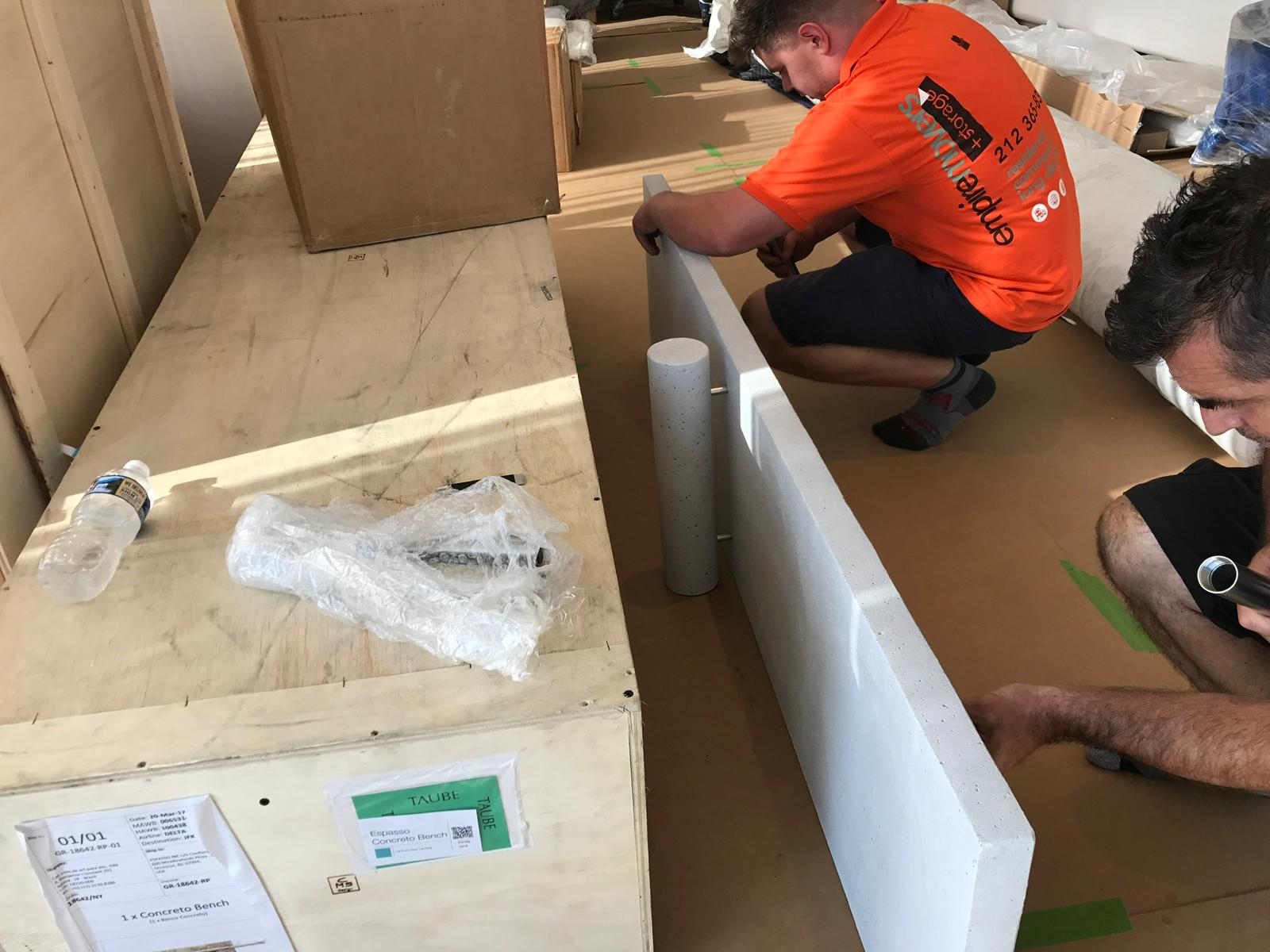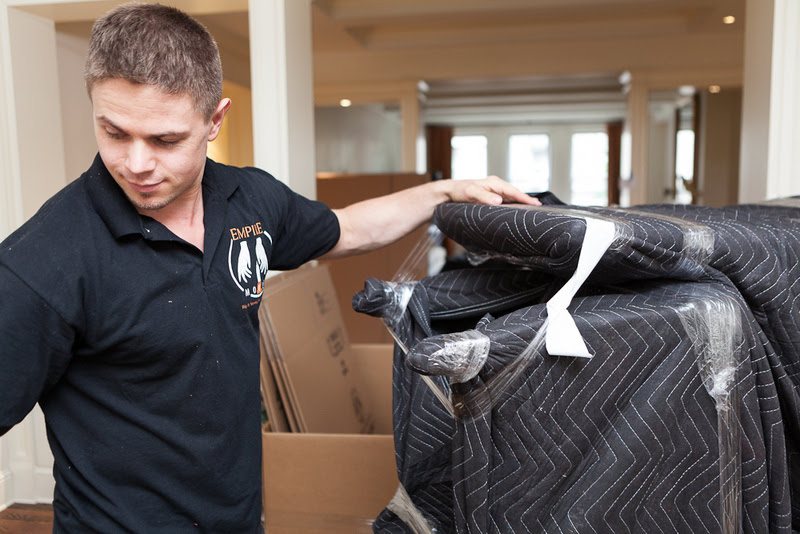It’s crucial to pack your clothes carefully while moving to a new house in order to keep their quality and value. However, packing clothes for a move can be daunting, especially when it involves high-end garments and delicate fabrics. For this reason, a lot of folks spend money on expert packing services from a top-notch moving company.
We’ll walk you through the safest and most effective ways to pack your clothes for a move in this post, from utilizing wardrobe boxes to using custom garment bags. Whether you’re moving across town, across the nation, or across the world, our professional packing advice will guarantee that your wardrobe gets the VIP care it merits.
What to Do Before Packing
To make the procedure easier and more effective, follow the instructions below before you start packing your clothes.
Purge Your Closet
A crucial first step in getting your clothes ready for a relocation is cleaning out your closet. It facilitates moving and enables a fresh start in your new residence.
Be harsh with your decluttering as you go through your closet. Any clothing you haven’t worn in a year, as well as any that doesn’t fit, is broken, or has visible wear, might be donated or sold. Additionally, you can use this time to arrange your wardrobe and put together a little moving-in wardrobe.
Sell or Donate Unwanted Items

Choose between selling and donating the stuff you’ve decided to get rid of. Websites like Poshmark and thredUP make it simple to sell your goods online and earn extra cash before the move.
The Salvation Army, Goodwill, or a nearby shelter are a few charitable organizations where you can give your used apparel. You can aid individuals in need and lessen the amount of waste that ends up in landfills by giving your gently worn clothing.
Launder Everything
Make sure to do all of your laundry before packing. This includes ironing or steaming any wrinkled items as well as washing and drying your garments in accordance with their care instructions.
Your clothing will be clean and dry after being washed, which will help prevent mold and mildew while it is being transported. It also makes unpacking easier, as you will not have to worry about washing your clothes before putting them away in your new home.
Sort Items by Type
Organize your clothes by sorting them into groups based on type. In three ways, doing this will save you time and effort. First, packing will go more quickly if comparable goods are grouped together. For example, you can pack all your T-shirts in one box using the flat-fold method and pack all your dresses in another box using garment bags.
Organizing your clothing will also make inventory easier, which is crucial if you intend to hire long-distance movers. Finally, organizing your clothing by category makes unpacking easier and enables you to find specific items fast when you need them.
Take Inventory
Once your clothes are organized, take inventory. A thorough list on hand will guarantee that nothing is forgotten throughout the loading or packaging procedure. Once your belongings arrive at your new home, you can use the same list to determine whether anything was lost or damaged in transit. This will make it easier to file a moving insurance claim if necessary.
To take inventory of your wardrobe, go through your closet and dresser drawers. For each accessory or article of clothing, note the category, brand, color, and any other relevant details in a spreadsheet, mobile app, or notebook.
Obtain Packing Supplies

To pack your clothes items securely, you will need a variety of box sizes, packing paper or tissue paper, bubble wrap, packing tape, wardrobe boxes, and garment bags. These items are available from moving companies directly or from a nearby office supply or home improvement store.
Before buying packing supplies, consult the moving company if you use one. The price of packing materials could be included in your relocation estimate.
Steps for Packing Hanging Clothes
Depending on your demands, the distance of your relocation, and the quantity of clothing you have, you can pack hanging garments in a variety of ways. Here are several possibilities:
-
Garment bags
Garment bags are available in a range of sizes and materials, including premium leather, polyester that resists mildew, and breathable canvas. Just place your clothing inside the bag and zip it up for security. Garment bags are comparatively portable and lightweight. However, because they can compress clothing and induce creases, they might not be appropriate for delicate textiles.
-
Wardrobe boxes
Heavy-duty cardboard is used to make wardrobe boxes, which also have a metal bar for hanging clothing. They include built-in handles and available in a variety of sizes for simple carrying. Wardrobe boxes are effective and give your clothes good protection.
-
Portable closet
In essence, a portable closet is a hybrid of a moving rack and a wardrobe box or garment bag. Lightweight portable closets come equipped with a frame, hanging bar, and cloth cover with a zipper. They are useful for keeping your hanging garments in one location and out of the weather. They can, however, be heavy and take up a lot of room.
-
Rolling rack
In essence, a rolling rack is a wheeled frame with a hanging bar. Rolling racks are portable, light, and frequently adaptable. You can move a closet full of hanging clothing on a mobile rack without having to separate them into numerous wardrobe boxes or garment bags. Since your garments will be exposed, they do not provide as much protection as other solutions.
Packing Non-Hanging Clothes
Even with additional options and considerations, packing non-hanging clothing can be more difficult than packing hanging clothing. Below is a review of the most popular packing techniques:
1. Packing paper and tissue paper
It may be necessary to wrap delicate goods in packing material or tissue paper to minimize wrinkling or damage during the relocation. The object needs to be properly folded, wrapped in paper, and then packed with other items in a box or luggage.
2. Compression bags
Compression bags and vacuum-sealed bags are excellent space-savers. Your clothing can be stacked and folded within the bag as directed, then the air can be purged as directed. The garments will be compressed as a result, allowing you to pack more into a smaller space. Bulky things like winter coats and sweaters function particularly well in compression bags.
3. Military rolling method
In order to save space and avoid wrinkles, the military rolls clothing tightly into small bundles. Lay the clothing flat and iron out any creases before using this technique. After that, tuck the sleeves inside, and tightly roll the entire outfit from the bottom up. T-shirts, jeans, and other casual apparel work well with this technique.
4. Suitcases and duffle bags
Instead of using moving boxes to pack your clothes, utilize your luggage or duffel bags. Just keep in mind that luggage can be bulky and inappropriate for fragile stuff.
5. Dresser drawers
If you have dressers, you can move the entire dresser to your new house without removing the clothes from the drawers. There is no need to pack and unpack your clothes with this easy choice. Any fragile objects or items that could spill and scuff your clothing during shipping should be taken out, though.
6. Folded method
Folding non-hanging clothing into tidy, compact squares or rectangles is the most typical method of packing. To employ this technique, fold the clothing in thirds or in half again, depending on the size, after folding it in half lengthwise. Dress shirts, sweaters, and other delicate garments work best with this technique.
How to Pack Accessories and Shoes
The best way to pack shoes and other accessories safely is in specialized boxes, such as jewelry boxes, hat boxes, and shoe boxes. When compared to standard moving boxes, these specialist boxes offer better organization and protection. Shoes, hats, and purses should all be wrapped in paper or plastic to prevent scratches and should be filled with packing paper to help them maintain their shape.
If you still have the boxes, it’s preferable to pack shoes in them. Alternatively, you can buy shoe boxes made of cardboard or plastic. An other choice is using individual drawstring bags. To reduce space, you can also place delicately wrapped shoes, handbags, and other accessories in the bottom of closet boxes.
Whichever approach you decide on, make sure to name the boxes or bags with the contents and the room they belong in. This will make unpacking simpler.
How to Transport and Pack Delicate Pieces

To guarantee that your fragile items reach their destination in good condition, you should use particular caution. Here are some pointers on how to pack and move delicate or pricey items:
Use garment bags
Suits, dresses, coats, and other delicate things are protected further by garment bags. Make careful you use robust wooden or padded hangers to hang clothing.
Wrap jewelry carefully
To avoid tangles and scratches, wrap each item of jewelry in tissue paper or packing paper. Pack the wrapped jewelry alongside other comparable things in a larger box after placing it in a smaller box or bag.
Use acid-free tissue paper
Use acid-free tissue paper when packaging delicate accessories like hats or scarves to prevent color fading and fabric damage. It is easy to find this sort of paper at craft stores and online merchants because it was created expressly to stop the transfer of acids.
Pack fragile items together
Use tissue paper or packing paper to prevent creases and wrinkles while folding delicate or pricey clothing items. then store them with less delicate things rather than packing them together. Assure that the box or garment bag is marked “delicate” or “fragile,” and that it is one of the last items loaded onto the moving truck.
Wrap shoes and purses
You can wrap shoes and purses in bubble wrap, packing paper, or soft fabric, such as cotton or velvet. This will help prevent scuffs or scratches during transport.
Top Packing Tips for Moving

To make the moving process simpler, consider the following clothing packing advice:
1. Pack early
At least two or three weeks before to your move, start packing your clothes. First, pack out of season and rarely worn clothing. Pack any additional clothing that you won’t need right away as the relocation date approaches.
2. Pack an essentials bag
Set aside a personal bag that you can carry with you while moving. A few clean changes of clothing, toiletries, and any other necessities you might require during your first few days in your new home should be included in this suitcase.
3. Stay organized and take inventory
Take inventory and organize your clothing by kind as you pack. Pack similar items together and label any boxes or garment boxes clearly. This will facilitate unpacking and guarantee that your clothing is placed correctly. Additionally, it will be simpler to identify missing products and submit an insurance claim for damaged goods.
Our Recommendation
Discover the art of efficient packing with the best movers NYC. Whether it’s international moving, local moving, commercial moving, white glove moving, or student moving our guide ensures smooth moves. Safeguard delicate garments with expert tips – from silk to cashmere. Utilize wardrobe boxes, garment bags, flat-fold, or military roll methods for wrinkle-free results.
Take proactive measures to guarantee your clothing is in exquisite shape before sending it to a moving company. Our expert guidance emphasizes 5 Things You Need To Do Before Choosing a Moving Company. Add this to our advice to use premium packaging supplies like canvas clothing bags and acid-free tissue paper. Remember to just bring what you really need for the first few days in your new home, mark every item carefully, and pack lightly. This all-encompassing strategy ensures a smooth transition and perfect condition for your priceless clothing.




